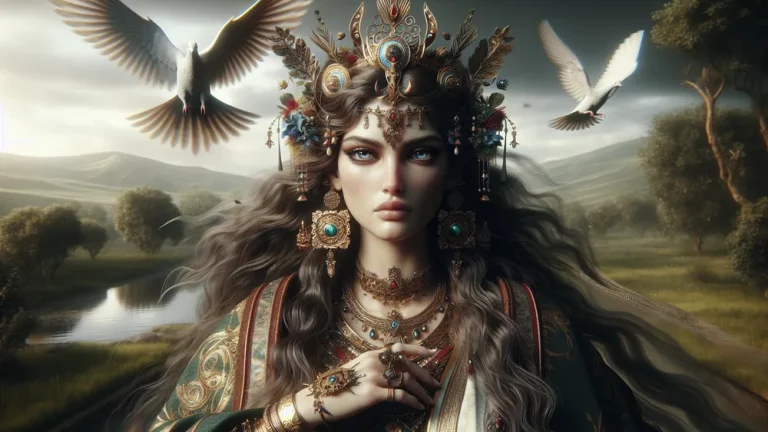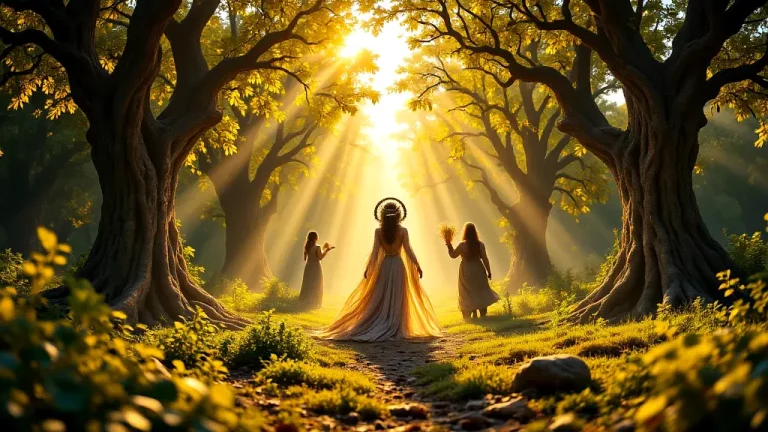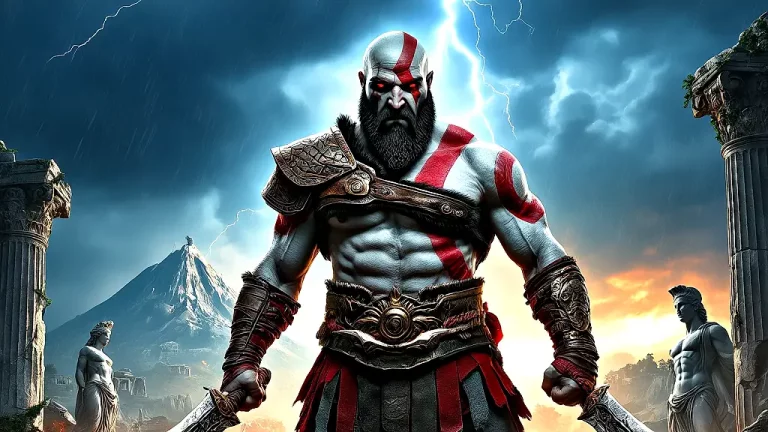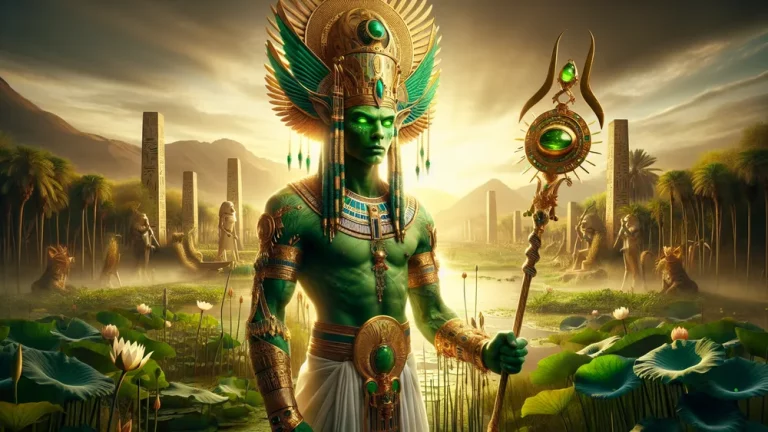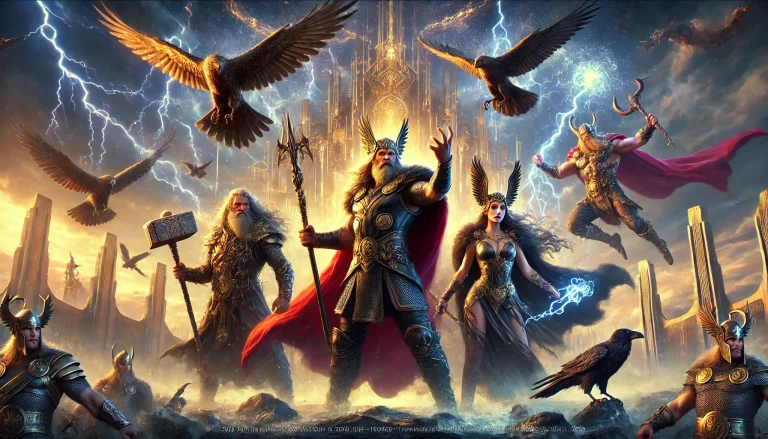Pleiades: The Seven Starry Sisters Of Greek Mythology
In the huge stretch of Greek mythology, the Pleiades have a unique spot, both as stories and stars. When you start looking into their stories, you’ll come across a mix of tales linked with the universe and gods.
Key Points:
- The Pleiades are seven sisters. They are the daughters of Atlas and Pleione.
- They were turned into stars by Zeus. This was to escape Orion.
- In Greek tales, they mean sisterhood and are tied to stories and seasons.
- Seen in different tales and cultures, like Roman and Maori stories.
- Farmers of old used them to decide planting times and harvest times.
- These stars are bright and about 444 light-years away.
- Various cultures admired these stars. They used them for calendars and rituals.
You often hear about the Pleiades as the Seven Sisters in many myths; they appear as the daughters of the Titan Atlas and oceanid nymph Pleione. Their mark goes beyond just Greek tales because you can see them in the sky as a constellation, and they help old sailors and farmers, too.
As you go deeper into their legends and what they mean, you find out how these shining sisters fit into human history, helping track time and making many people think about them through the years. There are lots of interpretations in different places and times, so knowing the Pleiades not only gives a peek into our shared stories but also points out the never-ending wonder with the stars above.
Pleiades: Overview and Key Facts
| Aspect | Details |
|---|---|
| Number of Sisters | Seven, often called the Seven Sisters. |
| Family Background | The sisters had parents named Atlas, the Titan, and Pleione, a sea nymph. |
| Stand for | They mean ideas like sisterhood, unity, and helping sailors find their way. |
| Myth Importance | Linked to different stories, including being chased by Orion and getting help from Zeus. |
| Change to Stars | The sisters became stars in the sky to hide from the hunter Orion. |
| Constellation Name | Called the Pleiades in the sky, part of the group of stars known as Taurus. |
| Importance in Different Cultures | Found in many places beyond Greek stories, including in Roman, Maori, and Japanese tales. |
| Best Time to See | You see them clearly in late fall and early winter in the Northern Hemisphere. |
| Importance for Old Farmers | Old Greeks used them to decide on planting and harvest times. |
| Star Details | Made up of hot blue stars about 444 light-years away from Earth. |
The Stories Behind the Pleiades
Once you look more, you find the many interesting stories about the Pleiades. These make clearer their beginnings and their lasting impact in Greek myths.
Their Family Background and Origins
As for Greek mythology, the Pleiades are known as the seven daughters of Atlas, a Titan tasked with holding up the sky, and Pleione, a sea goddess. This important family line means they have a big place in Greek myths, connected to both the ancient Titans and nymphs.
Their grandfather, Uranus, he was first to be the sky god, pointing out the sky-related themes in their stories. Families like theirs give the Pleiades a lot of value, revealing how much they are part of the godly order. They have connections that go beyond; the Pleiades’ siblings include the Hyades (another star bunch) and Calypso, who kept Odysseus on her island.
You can see the family tree spread, linking earth, sea, and sky.
Seeing their direct link to Atlas shows their tie to strength and the burdens their father had with the sky, which are large spheres. The sisters were part of these stories where divine ties and duties mix. To talk about their wide family:
- Parents: Atlas and Pleione
- Grandparents on Atlas’s side: Iapetus and Clymene or maybe Asia, old Titans
- Grandparent on Pleione’s side: Oceanus, a great river around the earth
- Siblings: Calypso, Hyas, and the Hyades
This family history gives the Pleiades their story importance, making them divine figures and part of the stories and star ideas that shaped old Greek culture.
The Pleiades, daughters of Atlas and Pleione, hold a key place in Greek myths with ties to Titans, nymphs, and the sky through their family connections.
Who Are the Seven Sisters?
Called the Seven Sisters, the Pleiades each have their own stories and characteristics in Greek myths, meaning each one adds in their own way to these stories. There’s Maia, the oldest, who means a lot because of her bond with Hermes, the Olympian god. Alcyone is shown as connected to Poseidon and stands for calmness and the sea.
Electra has a critical role because of her children; they tie her to the famous city of Troy. Taygete, who is often linked to Artemis the huntress, stands out for her bond with nature. Talking about the quieter sisters, we get to Celaeno, known because she marries Poseidon, and Sterope, also called Asterope, who is closely tied to Ares, the war god.
Merope is different because she married a human, Sisyphus, meaning her story gives insight into the mix of gods and humans.
| Sister | Meaning | Myth Stories Connected To | Role in Myths |
|---|---|---|---|
| Maia | Caring, Mother | Mother of Hermes | Known for being Hermes’ mom and her caring role. |
| Alcyone | Calm, The Sea | Links to Poseidon | Means calm seas and gets attention in stories about Poseidon’s area. |
| Electra | Sadness, Beauty | Mother of the one who started Troy’s race | Makes better the tales about Troy by linking to heroes. |
| Taygete | Nature, Hunt | Artemis | Agrees with Artemis’ and nature’s realms. |
| Celaeno | Quiet, Storm | Married to Poseidon | Stands for mystery with storms and hidden things. |
| Sterope | Brightness, War | Related to Ares | Known for battle skills and brightness connected to gods. |
| Merope | Being Human, Humility | Married to Sisyphus | Her marriage to a man gives a new look into god and human stories. |
What you find with each sister is that their stories mean themes of nature, gods, and how they mix with humans. These stories don’t just make Greek myths richer; they also give a look into how ancient Greeks saw the universe and their world.

What They Mean in Greek Stories
In Greek stories, the Pleiades are important, probably best known for their link to the hunter Orion. A story that lasts long talks about how they turned into stars because gods acted to help them escape Orion’s chase. It depends on the story, but the hunter doesn’t give up, chasing them for their looks, and then Zeus put both the sisters and Orion up in the sky.
Achieving immortality came from this change, and they shine forever as a famous star cluster in the night sky. This sky story means things like protection and how gods and humans are mixed. Like a movie today where a character gets saved and lives forever, it means people still find the Pleiades interesting because of their look from the sky. Their place isn’t only about Orion’s story.

They are often signs of big story events and holidays, part of farm and ceremony plans in old Greece. When the Pleiades come up in the sky at dawn just before sunrise, it told people to start planting, acting like an old signal to begin the growing time.
Almost like a calendar that tells you to plant and get ready for picking, pointing out how stars affect life and well-being directly. Moreover, the Pleiades took part in different celebrations and important events, making their story role big and real. During the winter middle season, they are high in the sky, and people join together in religious acts and happy moments.
Stories were told again, and Pleiades’ myths were spoken, acting as fun and teaching. You find they are important icons beyond just stars, and they became part of daily life for the Greeks back then. As you read these stories, see them not just as a bunch of stars, but as shining guides that helped old societies directly and figuratively.
How Ancient Folks Saw the Stars
As for thinking about ancient times, let’s look now at how these sky sisters looked in the night skies, and this view set a base for stories and rituals that came about around them.
Spotting the Pleiades at Night
In ancient Greek days, the Pleiades star cluster was more than just a sight in the sky; they were important time markers. In spring, when these stars could be seen in the morning sky, time to start planting crops was near, working like a farmer’s guide.
On the other hand, when they set, it meant autumn had come, and farmers had to get ready for the harvest. These stars were the keepers of time, as the ancients understood it. Consistent like a sky clock, the Pleiades dictated life’s rhythms.
Looking up, the Greeks would find them meaningful, as the rising and setting of these stars told them how to fit human tasks into the vast order of space, which means the Greeks mixed their myths with real observation, making a calendar based on what went on in the sky.
Their Impact on Greek Traditions and Rituals
The Pleiades had a critical place in ancient Greek cultural life and religion too, with their presence mixed with farm calendars and ceremonies. As signs of seasonal shifts, these stars indicated changes that were crucial for farming and set a basic guide for planting and harvesting. Across Greece, when the Pleiades came up in the morning, people celebrated with different festivals.
Thesmophoria is one of the most notable, dedicated to Demeter and Persephone, and this showed the connection between the Pleiades’ path in the sky and earth’s fertility. Think of these stars as signals from the old world for big gatherings and celebrations. They sounded almost like natural event invitations setting times for worship, thanks, and coming together in communities.

Besides guiding farm tasks, the Pleiades influenced religion and everyday life a lot. Their appearance meant times for ritual cleaning and getting ready for important religious festivals. Many temples and holy places were pointed towards the Pleiades, showing their divine link and importance in Greek spirituality. It’s like they were space beings giving divine help to the people, which pushed them to do things from religious ceremonies to fun gatherings.
By watching the stars, the ancient Greeks not only checked the time but also tied their lives to space’s order, mixing stories and real life, which worked in every part of their existence.
What Other Old Cultures Thought
The Pleiades weren’t just important in Greek star stories; other cultures saw this star group in their own way, yet they recognized its sky interest. Babylonians, calling them “Stars of Heaven,” had records on tablets from 1000 BCE. They linked the stars with the seasons and used them in their zodiac. For the Egyptians, the Pleiades signaled the Nile’s flood, meaning a time to plant again and grow.
In Norse tales, called “Freya’s Hens,” these stars were tied to the goddess Freya, linking to farm growth much like in Greece.
Here’s a list that probes these cultural views:
- Babylonian: Known as “Stars of Heaven,” a key part of their zodiac and sky tracking.
- Egyptian: Tied to the Nile’s flood, symbolizing life and farm plenty.
- Norse: Called “Freya’s Hens,” with links to Freya and growth, pushing farming and success.
With various myths and stories, the Pleiades influenced many; each culture’s stories reveal a wide interest in these stars. Even with some differences, the clusters were always seen as important sky points in myths and common life.
The Pleiades star group held significant importance across different cultures—Babylonians, Egyptians, and Norse—each associating it with natural cycles, farming, and mythology, reflecting a shared interest despite their unique interpretations.
Famous Myths and Stories
We should look at some of the most interesting tales that made the Pleiades famous in Greek mythology. These are about stories that are still told over and over even now.
Orion and His Chase
Orion was a great hunter. His skills and pride were large, just like the land he walked on. The Pleiades sisters found an eternal place in Greek myth because of him. When Orion saw the sisters, he was charmed by them, and he chased them all over the earth. It was a threatening shadow he cast, showing his unending desire, not just skill testing. It is similar to a never-ending chase game, with high stakes.
Zeus, the king of the gods, stepped in because that’s common in Greek tales – gods solve problems. When Zeus transformed the Pleiades into stars, this act saved them, meaning Orion could not reach them anymore. This change didn’t just save them. It made them stars too, a good way to match story and stars in space. As stars, they were safe and could always be noticed, celebrated by many.

It signaled a lasting presence beyond earth problems. For a modern idea, think the ultimate protection plan, but out in space, making witnesses of Orion’s hunt into bright signs of escape forever. Still, the story went on in the night sky. Orion’s constellation is always chasing them but never close. This means never-ending pursuit, a constant chase nobody wins.
It is a strong idea even today. It means trying hard and wanting things one cannot have, shown in stories and stars, as people in the past explained life with stories using the sky, making it not only for looking but for learning too.
Zeus’s Connection to the Pleiades
In Greek myth stories, the way Zeus is connected to the Pleiades means deep godly care and star group placement. The story where Zeus made them stars shows he protected the sisters, making sure they were always safe from dangers like Orion’s chase. This was not only escaping earthly problems. It was also being placed forever among the stars.
For them, it was a safe place in space, like a king might protect people in trouble, keeping them safe and calm. In Greek tales, god actions like these show the strong power of gods like Zeus, who could change things in the universe, changing fate and placing stories among stars to see forever.
Related Greek Mythological Creatures
In this collection of Greek myths, you see creatures and beings mixing with the stories about the Pleiades. Sharing their world of myths with others, the Gorgons, Sirens, and Titans stood out. Each brings its own story and lesson into these tales. They made a lively place, with stories of gods, heroes, and creatures always crossing paths.
Those who want to learn more about these interesting beings can check out the Greek Creatures and Monsters list which gives more details about what they are and their stories. By knowing this, followers of these myths can see better how these legendary creatures lived in a universe where gods changed both magical worlds and human lives.
FAQs
1. Why are the Pleiades significant in Greek mythology?
The Pleiades are significant in Greek mythology because they symbolize divine ancestry and celestial beauty, as they were transformed into stars by Zeus for their protection.
2. How did the Pleiades become a constellation?
The Pleiades became a constellation through their transformation into stars by Zeus, as an act of divine intervention to protect them from the hunter Orion’s pursuit.
3. What lessons do the stories of the Pleiades teach us?
The stories of the Pleiades teach us about themes of family unity, resilience, and transformation in the face of danger and adversity.
4. How are the Pleiades different from other star groups in mythology?
The Pleiades are different from other star groups in mythology due to their unique role as both a constellation and a divine family of sisters with rich mythological narratives involving several major Greek gods and heroes.


